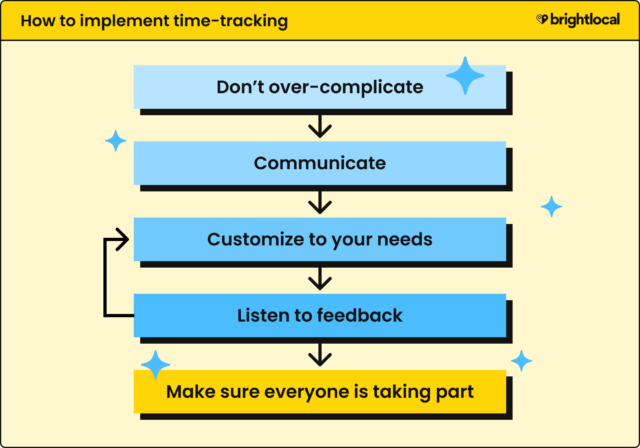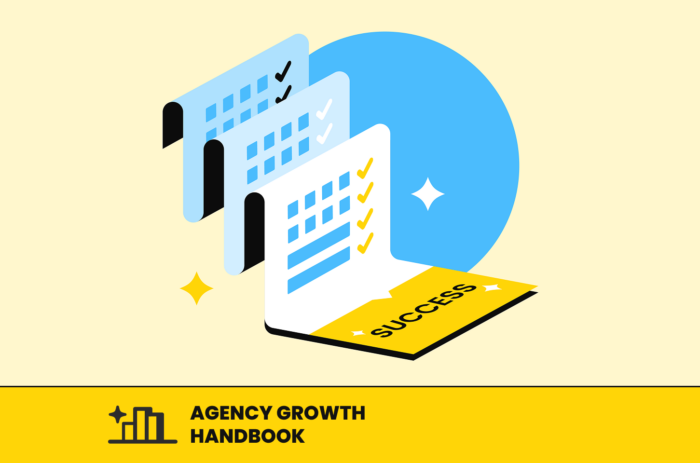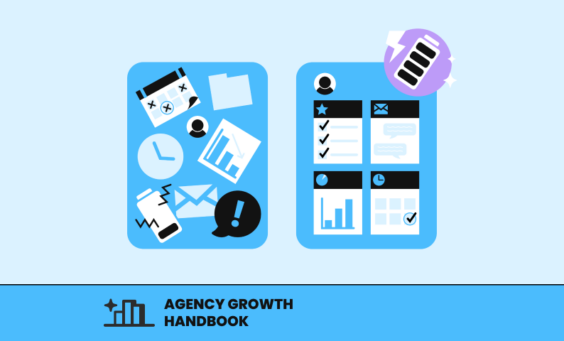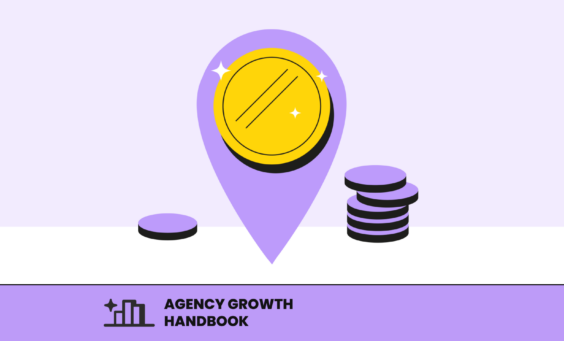This article is from our Agency Growth Handbook—a collection of guides created to help local SEO agencies grow and succeed. It is chapter six of ‘Part 3: Retention & Growth’.
Whether you love them or loathe them, timesheets are likely a necessary tool for your success if you’re an agency owner. In this piece, we’ll teach you how to use time-tracking and timesheets to scale and grow your business, and how to get your teams engaged with the process.
They may not be sexy, but it’s about time we talked timesheets.
What are timesheets?
To understand how to best implement time-tracking, we have to first understand what timesheets actually are. In effect, timesheets are a way of manually tracking time spent on individual tasks throughout a work day by each individual employee. In most cases, employees are responsible for measuring and tracking the time spent on each task and are often also responsible for inputting this data into a centralized system at the end of each working day or week.
The complexity of timesheets will vary greatly across industries and companies, with some choosing a less specific way of measurement—perhaps only tracking billable work, or client work generally, or measuring each hour spent working on a specific task, rather than exact minutes. Meanwhile, other companies will want to track time much more granularly, perhaps measuring in 5-minute increments and with each specific client task being tracked rather than the totality of work done for that one client.
Timesheets are exactly what they sound like—a record of the time employees spend on tasks during their working hours. This guide will show you how to use timesheets not just for tracking, but as a tool to boost team efficiency, improve profitability, and help both your employees and your business work smarter and scale successfully.
What are the benefits of time-tracking?
The benefits of time-tracking go beyond the obvious and can have wide-reaching positive impacts for organizations and employees alike. Here are some of the benefits:
Make Data-Driven Decisions with Confidence
How many times have you seen businesses fall down because decisions are made based on assumptions? With accurate timesheet data, you can hone in on the actual problem and uncover new opportunities. This allows you to plan accordingly, knowing your decisions are based on facts and logic.
Manage Client and Project Time More Effectively
Over-servicing clients is one of the riskiest and most costly things an agency can do, followed closely by under-servicing them! By tracking all time spent on clients and specific projects against their clearly defined budget and timeline, you can start to notice if certain staff or tasks are taking longer than they should be or if certain clients are being neglected because they’re not as vocal as others.
It can be tempting to go straight to pushing harder, but it’s important to find out why timings haven’t aligned. Has your team been under pressure from the client whose expectations are way out of line with reality? Have some team members had PTO or sickness that wasn’t properly factored into their workload? Under or over-servicing is usually part of a wider conversation that is well worth having to prevent inefficiencies or burnout before they take hold.
Allocate Resources and Staff with Precision
Beyond planning what hours should be allocated to your clients based on their fees, you can also get more granular (and more accurate) by looking at utilization rates of different roles. This ensures you’ve got a good mix of senior and junior folks on the client teams. If you find that certain accounts are demanding too much senior attention, or you’re not able to get the agreed seniority levels on accounts, this can lead to inefficiencies in profitability down the line.
Anticipate Hiring and Pipeline Needs
One of the biggest perks of keeping accurate timesheets is that it can help you prepare and anticipate your hiring and allocation needs well in advance. Hiring ahead of the curve is only possible when you know exactly how many people you need on your team for the amount of client work coming in.
Planning for new business that is set to land in a few months’ time could be tricky if your team is already working at 90% capacity and there are no planned departures in the team. Add to this vacation leave, parental leave, or long-term sickness, and you may quickly find you aren’t able to service these new clients effectively. You can also risk damage to the important early relationship due to not having enough time to properly service them.
Promote Fair Workloads and Prevent Burnout
Something you may not even be aware of until you implement timesheets is that certain teams or individuals may be working far harder or longer than others. While there may be times when work gets busier and your teams work a little longer to get important projects finished for deadlines, if this becomes a consistent habit, over time, you’ll find your teams becoming burned out and jaded, particularly if not every team member is putting in as much effort.
An equal and fair environment is needed for long-term success and to avoid people feeling taken advantage of. Protecting your high-performers from overwork and encouraging under-performers to work in line with role and time expectations, backed by timesheet data, is a recipe for success.
Assess Client Profitability More Strategically
In the pressure to fill your pipeline and ensure money is coming in, it’s common for agency owners and growth teams to not always fully qualify the leads they bring in.
There is a danger of over-promising in the pitch stage—offering huge discounts, saying yes to work that isn’t possible in the allotted time, or agreeing to have the most senior team members on the accounts. All of these little decisions to sweeten the deal can have a negative impact on the profitability of the client if they’ve not been fully costed.
Discounted work for the full amount of hours is time that could be spent on a client who pays full fees. Deliverables that take five times the number of hours to complete than allocated essentially means teams that are working for free.
Senior teams brought onto accounts without factoring in the day rates and utilization rates make for unprofitable accounts with too many strategists and not enough ‘doers’. Using timesheets to spot and assess the profitability of clients can be a valuable project if you want to think more strategically about the new leads coming into your business and the scalability of your agency model.
Add an Extra Layer of Protection and Proof
A last-case benefit of keeping timesheets is that they become an additional layer of security. If you have any difficult client queries about how time has been spent on an account, or if you want to show why certain projects have taken longer or shorter than expected, you have a full log available.
While it’s always best to try to ensure client and team relationships are strong enough that proof isn’t required, in rare cases when unreasonable requests are being made, it can be really helpful to have a backup.
If a client is consistently over-demanding of your time, it might mean that business-as-usual activity can’t be fitted in alongside ad-hoc requests. Sometimes pulling timesheets and showing the client exactly where their time is going is the best way to get them to see the impact of their requests.
This doesn’t always have to be a negative conversation either—perhaps they were genuinely unaware of how much ad-hoc support they would need, and new terms with more time and budget can be agreed upon.
Why are timesheets vital for growth?
For Agencies
Timesheets clearly benefit agencies that work with multiple clients and revenue sources, and often work to monthly billable retainers based on hours or days agreed upon. In an agency model, time is money and must be properly allocated and used for the business to be financially sound and able to grow.
For Consultants
When running your own business and engaging with multiple clients, like with an agency, your time is money. However, as a consultant, you’re not just responsible for the billable work, but also all of the background non-billable tasks like marketing, sales, invoicing, and admin tasks. Timesheets can help you grow your business in a sustainable way and reassess when you’re spending too much time on certain less profitable tasks.
For In-house Teams
While in-house teams don’t need to worry about multiple clients or billable/non-billable time, there is still a need for efficiency and profitability. Using timesheets to track and prioritize the highest-reward and revenue-driving internal projects could be a great way to help you grow as a business and highlight when less important work is taking too much of your team’s time.
For Employees
It’s common for employees to assume timesheets are only there for their company’s benefit or are being used to “spy on” or micromanage teams. Not only should this never be the aim of any business, it’s also not just the organizations who benefit from time-tracking.
Taking control of your own time management helps you highlight trends before they become larger issues. You can use the data to improve your own efficiency and prove your value. It’s a great way for you to grow your own confidence and improve essential business skills that will benefit you as your career progresses.
How to Implement Time-tracking

Don’t Over-complicate
One of the biggest mistakes CEOs and operations managers make when introducing time-tracking is overcomplicating the process. As long as it works and is used, you’re off to a good start. Remember, if it’s not usable and logical, your teams either won’t fill them out or will just make them up, making the whole operation and data output ultimately flawed.
Communicate
Make sure you communicate implementation well and get teams invested and excited to take part. If you can’t make your employees see what the benefit is for them to do this, then you’re going to struggle to get their buy-in.
Customize to Your Needs
A one-size-fits-all system or a third-party tool who doesn’t know your industry or teams might not be what you actually need and is likely to cost a lot of time, effort, and money. You know your staff and your industry better than any third-party provider, so think about what data and impact you want to see from time-tracking and work backwards from there until you find a method that works for you.
Listen to Feedback
Get regular input and feedback from all layers of the business during the planning stage and post-implementation. Feedback is especially valuable from those who will be using the system most and inputting the widest variety of tasks. Make sure your feedback isn’t just a loop of CEOs, senior leaders, and operations managers who are too disconnected from the daily work to know what will work in daily practice.
Make Sure Everyone is Taking Part (Yes, That Means You, Too!)
This is a biggie. If your senior teams aren’t filling in their timesheets, then how can you expect your juniors to respect the process and fill in theirs too? Encourage fairness and equality, and don’t ask your teams to do anything you can’t or won’t do yourself. Not only will you be more likely to get a higher engagement rate from your teams, but you might be surprised to see the impact of the data once you have senior staff filling out timesheets too.
How much valuable, billable senior time is being given away without being accounted for to unprofitable clients? Are your senior teams actually hitting their billable targets? If you don’t have the data, you can’t use these high-performing, high-value employees to the best of their potential and for the benefit of your business.
How to Estimate Costs and Timings
Estimating costs and timings will be different for every team and specialization within your company and should be customized to your needs. However, here are some guidelines to help you get started.
For Agencies
- If you’re not someone who works in the day to day of the tasks you’re billing, make sure you are including the teams who do this work first.
- Align with growth teams and department leaders to ensure timings aren’t being poorly estimated from the outset.
- Consider billable rates among your teams and utilization rates, as well as day rates for clients—this will likely vary and affect profitability.
- For larger-scale agencies, it’s likely you’ll need specialist operations managers and third-party software to accurately estimate. However, without on-the-ground teams being included and employees actually engaging with this software and doing accurate timesheets, this becomes a financial challenge to the business and leaves you in the dark about the realities of your requirements.
For Consultants
- As you grow, you will get better at accurately assessing how much time is required for certain tasks. Keeping timesheets from the outset of your consultancy will allow you to adapt as you grow.
- Have you factored in admin time, sales time, invoicing time, marketing time, etc., into your financial budgets and plans for each month? Noting how much time you need to dedicate to these non-billable areas may affect how much billable work you need to take on to be profitable.
- How much time is being spent on growth and new business? What are your success rates? How healthy is your pipeline, and can you take on the new work you’re trying to sell? Timesheets will allow you to assess what worked and what didn’t, protecting your time and resources in the future.
For In-house Teams
- Prioritize internal tasks and projects based on business need and importance, and then assign time accordingly.
- Ensure in-house teams get a chance to work on multiple projects and expand their skill sets by working collaboratively and not just becoming siloed by a project.
- Ensure time is being used effectively and fairly across teams. Are there particular tasks that are eating into people’s time the most, and meaning others are being de-prioritized?
And remember, whatever the business model, we aren’t robots. Setting yourself or your teams unreasonable billable targets and not leaving time for non-billable work that will make them happier, healthier, and more inspired is a common trap when planning and allocating time across teams.
You cannot and should not expect teams to be 100% productive every hour of the working day—even the greatest CEOs in the world can’t boast that utilization rate!
How to Monitor and Use Data to Inform Your Strategy and Business Needs
- Set up weekly prompts to fill out timesheets.
- Do mid-month check-ins to see if any clients are set to be over- or under-serviced and flag this with delivery teams while there’s still time to rectify the balance.
- Do monthly data analysis, pivoting your data by billable and non-billable targets, billable time used, etc., to flag potential issues.
- Adjust monthly (where possible) to ensure clients are well serviced if they’ve been under-serviced in previous months, and make sure to flag any concerns with delivery teams.
- Ensure managers and senior leaders are part of the conversation of potential problem clients and are working with their teams to come up with plans to improve. This could be efficiencies in ways of working, more senior support required on accounts, or clients needing a conversation around expectations and demands.
- Communicate regularly with teams and thank them for their hard work—time-tracking might not be fun, but it’s vital for success!
By now, you should be ready to start time-tracking or have some solid ideas for improving your existing processes. With the right approach, time-tracking can become a powerful tool to boost efficiency, strengthen team performance, and drive smarter, data-led decisions, setting your business up for long-term success.



